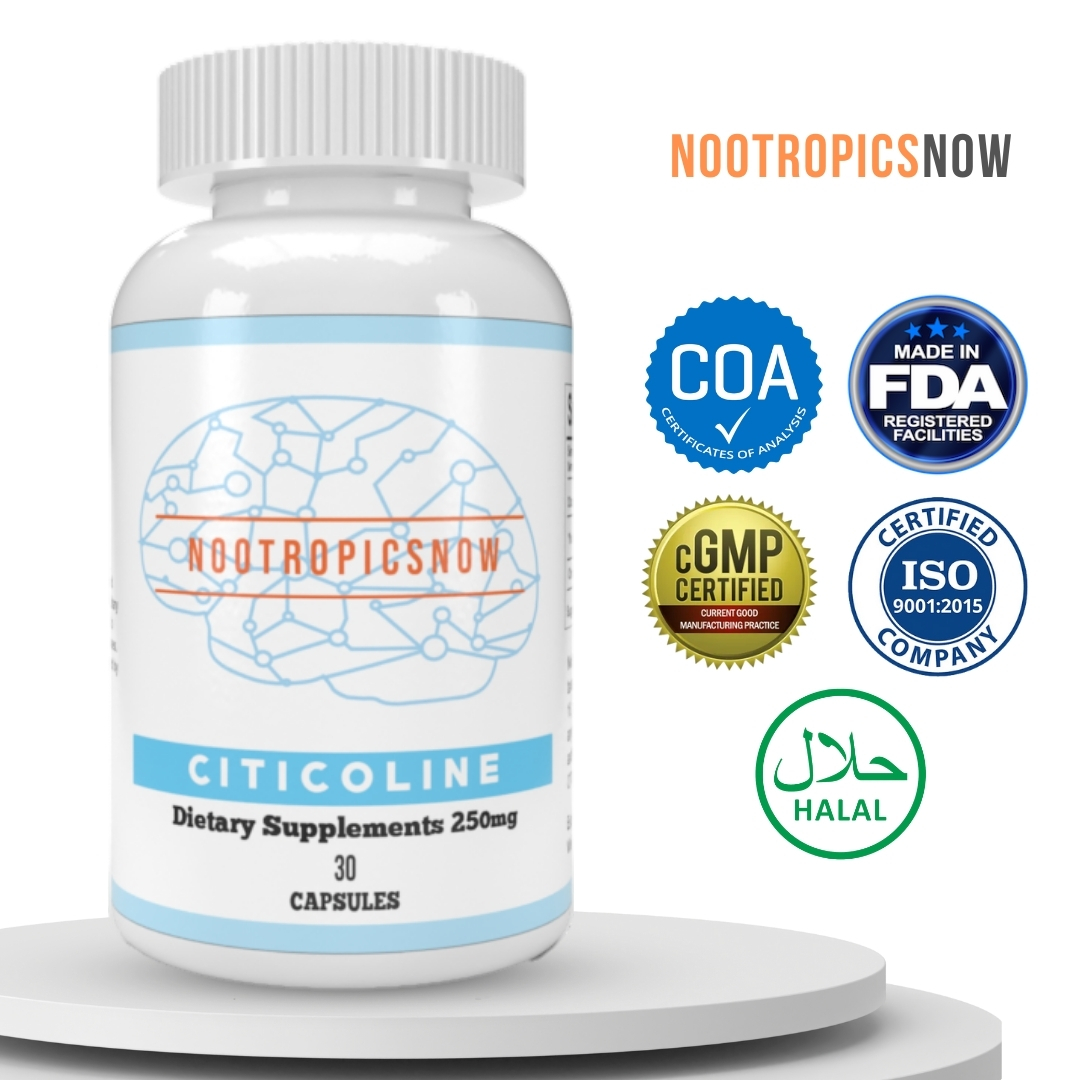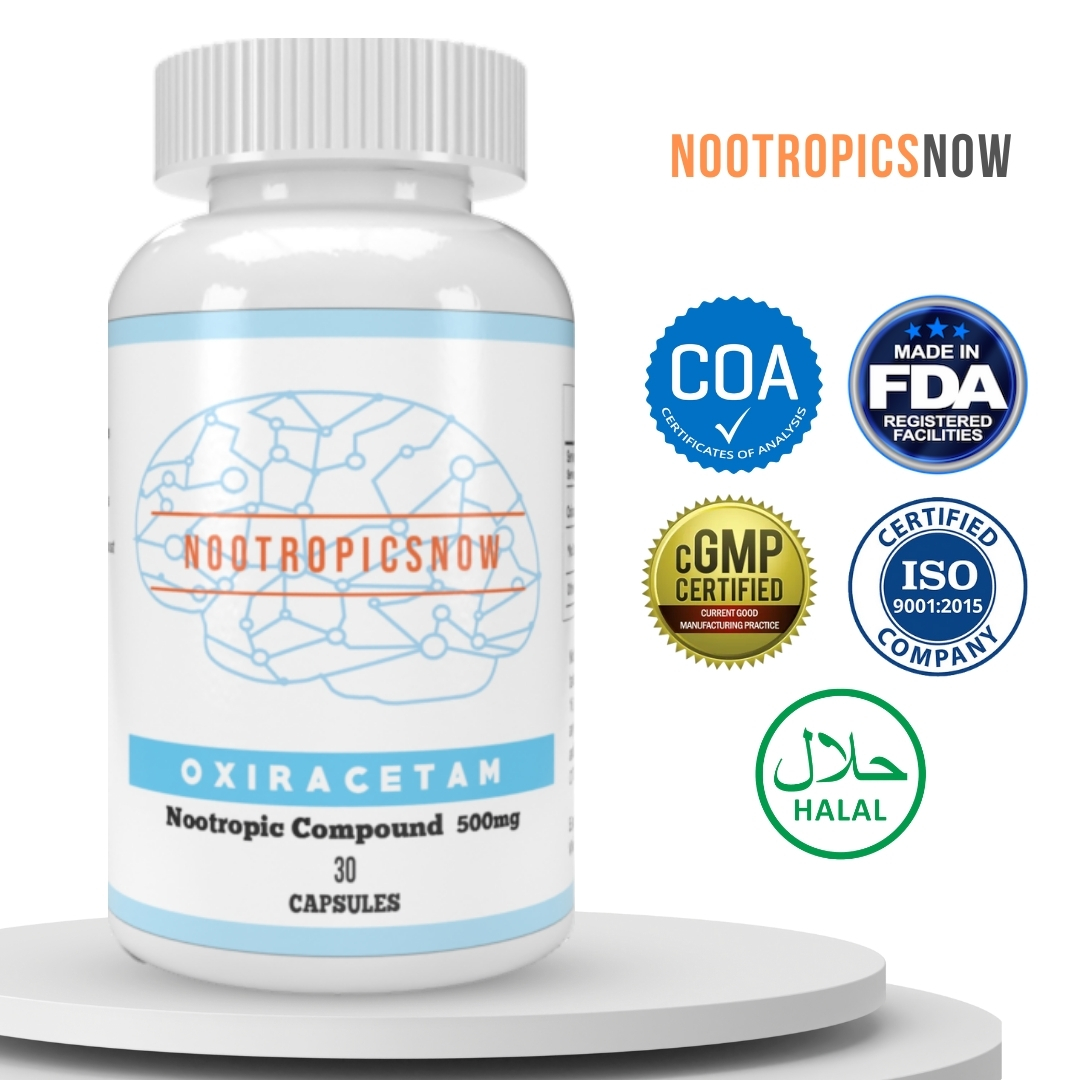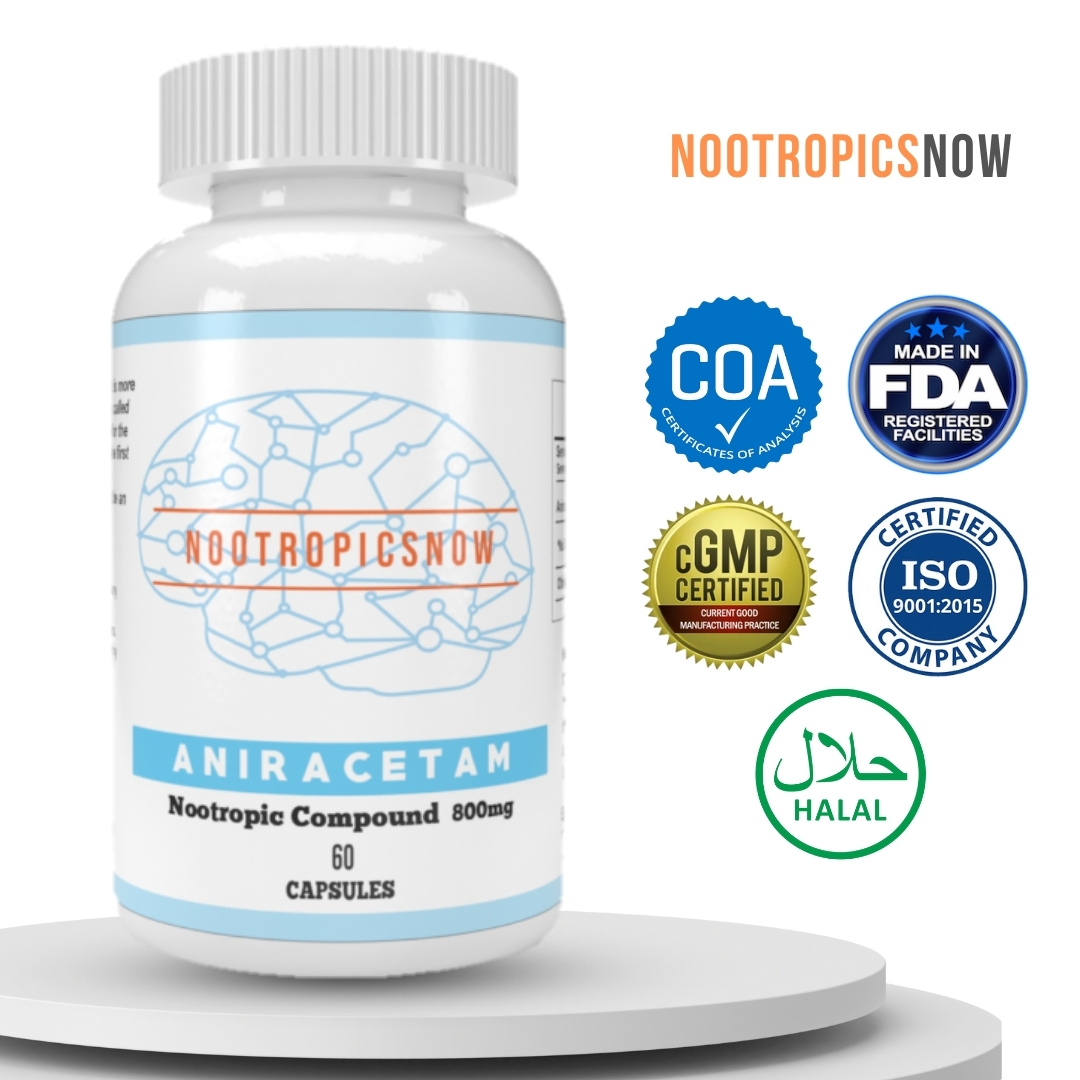Phenylpiracetam Choline: Benefits & Dosage

`markdown
Phenylpiracetam Choline: A Comprehensive Guide to Cognitive Enhancement
Phenylpiracetam, a potent synthetic nootropic, stands out within the racetam family due to its unique chemical structure and pronounced cognitive effects. Its enhanced capabilities make it a popular choice for individuals seeking improved focus, memory, and overall mental performance. However, to maximize its benefits and mitigate potential side effects, many users combine Phenylpiracetam with choline. This article comprehensively explores the Phenylpiracetam-choline stack, its mechanisms of action, benefits, potential side effects, and optimal usage strategies.
Understanding Phenylpiracetam
Phenylpiracetam, also known as Phenotropil, is a derivative of piracetam, the original nootropic compound. The addition of a phenyl group enhances its ability to cross the blood-brain barrier, resulting in significantly greater potency compared to piracetam. Consequently, Phenylpiracetam offers a more pronounced and rapid cognitive boost. Developed in Russia in the 1980s, it was initially used by cosmonauts to enhance their performance during long space flights, showcasing its capabilities to improve both mental and physical resilience.
Phenylpiracetam’s Cognitive Effects
Phenylpiracetam exerts a range of beneficial cognitive effects, making it a desirable option for those seeking mental enhancement. These include:
Phenylpiracetam’s Mechanism of Action
Phenylpiracetam exerts its cognitive effects through several key mechanisms within the brain. Understanding these mechanisms provides insights into how it enhances cognitive function.
The Role of Choline
Choline is an essential nutrient crucial for numerous bodily functions, including nerve function, muscle movement, and brain health. It serves as a precursor to acetylcholine, a neurotransmitter that plays a pivotal role in memory, learning, and overall cognitive function. Ensuring an adequate choline intake is crucial for maintaining optimal cognitive performance and overall health.
Importance of Choline for Cognitive Health
Choline’s critical role in acetylcholine synthesis directly impacts cognitive health. Acetylcholine is essential for:
Choline Deficiency: Symptoms and Consequences
Insufficient choline intake can result in various symptoms and long-term health consequences. Common symptoms of choline deficiency include:
The Phenylpiracetam and Choline Stack: A Synergistic Approach
Combining Phenylpiracetam with choline is a common strategy used by nootropic enthusiasts to enhance the benefits of Phenylpiracetam and mitigate potential side effects. The synergy between these two compounds results in a more balanced and effective cognitive enhancement.
Why Stack Phenylpiracetam with Choline?
Stacking Phenylpiracetam with choline offers several advantages:
Common Choline Sources for Stacking
Several choline sources can be used in combination with Phenylpiracetam. Each source has unique properties that may make it more suitable for certain individuals:
Determining the Right Choline Source
The choice of choline source depends on individual preferences and needs. Alpha-GPC and CDP-Choline are generally considered the most effective options due to their high bioavailability and additional benefits. Choline bitartrate is a budget-friendly alternative, while phosphatidylcholine is a milder option for those who prefer a natural source.
Benefits of the Phenylpiracetam-Choline Stack
The combination of Phenylpiracetam and choline offers a wide range of cognitive and physical benefits.
Enhanced Cognitive Performance
Physical Benefits
Mood and Motivation
Potential Side Effects and How to Manage Them
While the Phenylpiracetam-choline stack is generally well-tolerated, some users may experience side effects. Understanding these potential side effects and how to manage them is essential for a safe and effective experience.
Common Side Effects
Strategies to Manage Side Effects
Contraindications and Precautions
Dosage and Usage Guidelines
Determining the optimal dosage and usage guidelines for the Phenylpiracetam-choline stack is crucial for maximizing benefits while minimizing risks.
Recommended Dosage of Phenylpiracetam
The typical dosage of Phenylpiracetam ranges from 100 mg to 200 mg per day, divided into two doses. It is best to start with the lower dose (100 mg) to assess your tolerance and gradually increase it as needed.
Recommended Dosage of Choline
The appropriate choline dosage depends on the choline source. Here are some general guidelines:
It is important to adjust the choline dosage based on your individual needs and response.
Timing of Dosage
Take Phenylpiracetam and choline in the morning to avoid sleep disturbances. Some users prefer to take a second dose in the early afternoon, but this should be avoided if you are sensitive to stimulants.
Cycling Phenylpiracetam
To prevent tolerance and reduce the risk of side effects, it is recommended to cycle Phenylpiracetam. A common cycling strategy is to use it for 2-3 weeks, followed by a 1-2 week break.
Tips for Optimizing the Stack
User Experiences and Testimonials
Real-world experiences from users of the Phenylpiracetam-choline stack provide valuable insights into its effects and benefits.
Positive Experiences
Many users report significant improvements in focus, memory, and mental clarity with the Phenylpiracetam-choline stack. They also experience increased motivation and reduced mental fatigue. Some users find it particularly helpful for demanding tasks that require sustained concentration and cognitive effort.
Managing Side Effects
Some users experience headaches or other side effects but find that adjusting the choline dosage or cycling the stack helps to mitigate these issues. Proper hydration and timing of dosage are also commonly mentioned as helpful strategies.
Long-Term Use
Users who have been taking the Phenylpiracetam-choline stack for extended periods often emphasize the importance of cycling and monitoring their body’s response. They also highlight the need to combine it with a healthy lifestyle for optimal results.
Conclusion: Is the Phenylpiracetam-Choline Stack Right for You?
The Phenylpiracetam-choline stack can be a powerful tool for enhancing cognitive function and improving mental performance. Its synergistic effects provide a range of benefits, including improved memory, focus, and motivation. However, it is essential to approach this stack with caution and follow proper usage guidelines.
Ultimately, the decision to use the Phenylpiracetam-choline stack depends on your individual goals and preferences. If you are seeking to enhance your cognitive abilities and are willing to take the necessary precautions, this stack may be a valuable addition to your nootropic regimen. However, it is always best to consult with a healthcare professional before starting any new supplement regimen to ensure that it is safe and appropriate for you.
`
Phenylpiracetam and Choline: A Synergistic Cognitive Stack
Phenylpiracetam, a potent synthetic nootropic, has garnered attention for its ability to enhance cognitive function, boost physical performance, and even improve cold tolerance. However, users often report that combining phenylpiracetam with a choline source can significantly amplify its benefits and mitigate potential side effects. This section explores the synergistic relationship between phenylpiracetam and choline, detailing the mechanisms involved, optimal dosages, and practical considerations for creating an effective nootropic stack.
Understanding Phenylpiracetam: Benefits and Mechanisms
Phenylpiracetam, also known as Phenotropil, is a derivative of piracetam, the original nootropic. A phenyl group is attached to its molecular structure, enabling it to cross the blood-brain barrier more efficiently than piracetam. This structural difference translates to greater potency, with phenylpiracetam estimated to be 20-60 times stronger than its parent compound. Consequently, smaller doses are generally required to achieve comparable or superior cognitive enhancement.
The cognitive benefits of phenylpiracetam are diverse and may include:
The precise mechanisms of action underlying phenylpiracetam’s effects are complex and not fully understood. However, several key factors appear to be involved:
The Role of Choline: A Crucial Cofactor
Choline is an essential nutrient vital for several bodily functions, especially those related to brain health. It is a precursor to acetylcholine, a critical neurotransmitter involved in various cognitive processes, including memory, learning, attention, and muscle control. Adequate choline levels are crucial for optimal brain function.
However, many people, even those consuming a healthy diet, may not obtain sufficient choline from their food alone. Dietary sources of choline include eggs, liver, beef, and soybeans. A deficiency in choline can lead to several cognitive and physiological problems:
Why Combine Phenylpiracetam and Choline?
Combining phenylpiracetam with a choline source is a common practice among nootropics users. This combination offers several advantages:
Choosing the Right Choline Source
Several choline supplements are available, each with its own bioavailability and effectiveness. The most common choline sources include:
Table: Comparison of Choline Sources
| Choline Source | Bioavailability | Additional Benefits | Dosage Range | Considerations |
|---|---|---|---|---|
| —————— | ————— | —————————————————— | —————– | —————————————————————– |
| Choline Bitartrate | Low | Least Expensive | 500mg – 2000mg | May require higher doses to achieve desired effects. |
| CDP-Choline | Moderate | Provides Uridine, supports brain cell growth and repair | 250mg – 1000mg | May be slightly more expensive than choline bitartrate. |
| Alpha-GPC | High | Increases growth hormone levels | 300mg – 600mg | Generally more expensive; powerful, start with a lower dose. |
For most users, CDP-Choline or Alpha-GPC are the preferred choices due to their higher bioavailability and additional benefits. Alpha-GPC is generally considered the most potent and effective option, but it is also typically more expensive.

View Product

View Product
Optimal Dosages: Phenylpiracetam and Choline
The optimal dosages for phenylpiracetam and choline vary depending on individual factors such as body weight, sensitivity, and desired effects. However, general guidelines can be followed:
Example Stacking Regimen:
It is crucial to listen to your body and adjust the dosages accordingly. Some individuals may be more sensitive to phenylpiracetam or choline and require lower doses.
Potential Side Effects and Precautions
While phenylpiracetam and choline are generally considered safe, potential side effects can occur. Common side effects of phenylpiracetam include:
These side effects can often be mitigated by adjusting the dosage or adding a choline supplement.
Common side effects of choline supplementation include:
It is essential to consult with a healthcare professional before taking phenylpiracetam or choline, especially if you have any underlying health conditions or are taking other medications. Phenylpiracetam should be avoided by pregnant or breastfeeding women.
Cycling Phenylpiracetam: Preventing Tolerance
Phenylpiracetam is known to develop tolerance relatively quickly. Regular use can lead to a diminished response, requiring higher doses to achieve the same effects. To prevent tolerance, it is recommended to cycle phenylpiracetam.
A common cycling strategy involves taking phenylpiracetam for 1-2 weeks followed by a break of equal duration. This allows the brain to resensitize to the effects of the nootropic, maintaining its effectiveness over the long term.
Real-World Examples and User Experiences
Online forums, such as Reddit’s r/Nootropics, provide valuable insights into the real-world experiences of users stacking phenylpiracetam and choline. Many users report significant cognitive benefits from this combination, including improved focus, memory, and motivation. They also note that choline supplementation effectively reduces the incidence of headaches and other side effects associated with phenylpiracetam use.
Some users experiment with different choline sources to determine which works best for them. Alpha-GPC is often praised for its potency and rapid effects, while others prefer CDP-Choline for its broader neuroprotective benefits.
It is important to remember that individual experiences may vary. What works well for one person may not work for another. It is essential to experiment cautiously and find the dosages and combinations that best suit your individual needs and sensitivities.
Legal and Ethical Considerations
Phenylpiracetam’s legal status varies depending on the country. In some countries, it is available as a prescription medication, while in others, it is sold as a dietary supplement. In certain regions, it might not be approved for human consumption. Researching and understanding the local laws and regulations regarding phenylpiracetam and other nootropics before purchasing or using them is important.
Ethical considerations also play a role in nootropics use. It is essential to use these substances responsibly and avoid using them to gain an unfair advantage over others. Nootropics should be used to enhance cognitive function and improve overall well-being, not to cheat or deceive.
Potential Long-Term Effects and Further Research
While phenylpiracetam and choline appear to be safe for short-term use, the long-term effects are not fully understood. More research is needed to assess the potential risks and benefits of long-term nootropic use.
It is also essential to stay informed about the latest research findings regarding phenylpiracetam, choline, and other nootropics. The field of nootropics is constantly evolving, and new information is emerging regularly. Staying up-to-date on the science can help you make informed decisions about your nootropic regimen.
Alternatives to Phenylpiracetam and Choline
If phenylpiracetam is unavailable, unsuitable, or if one prefers natural alternatives, there are several other options for cognitive enhancement:
Conclusion: A Powerful Tool with Responsible Usage
Combining phenylpiracetam with a choline source can be a powerful strategy for enhancing cognitive function and mitigating potential side effects. However, it is essential to approach this combination with caution and responsibility. Start with low doses, listen to your body, and consult with a healthcare professional before starting any new supplement regimen. Cycling phenylpiracetam can help prevent tolerance, and staying informed about the latest research findings is crucial. When used responsibly, phenylpiracetam and choline can be valuable tools for improving cognitive performance and overall well-being.







